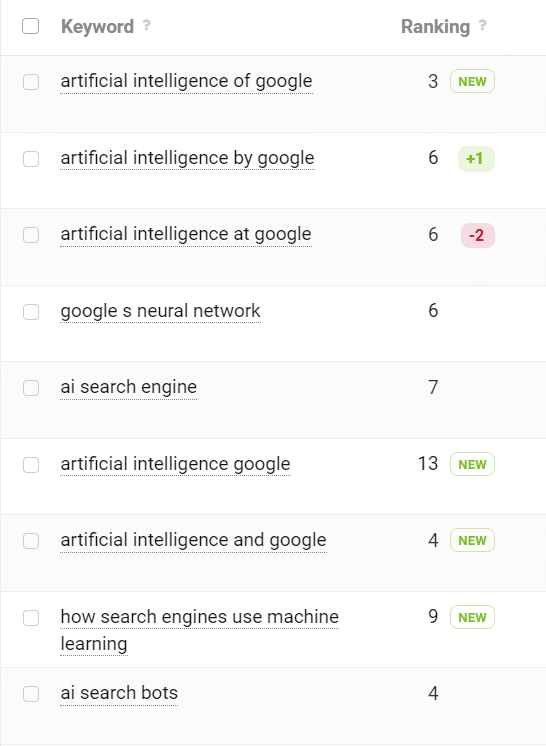Creating content to satisfy long-tail search queries is an often-overlooked strategy. It’s easy to go after bigger wins, but focusing on the smaller gains can lead to powerful long-term results. Many times in SEO, slow and steady wins the race.
Search has been evolving and talking about keywords might seem old-fashioned. But long-tail queries have never been more important.
As search is second nature for many people these days and voice search gains popularity, searches are becoming more conversational. Creating content to satisfy this type of query can be really beneficial.
To get the best results from this strategy you need to approach it thoughtfully. In this article, I’ll cover some tips to get more SEO benefits from long-tail queries.
Long-tail keywords: What are they and why use them for SEO?
Long-tail keywords are specific words or phrases that tend to have a better conversion value. They are usually longer (three to five words) and have a lower search volume.
If long-tail keywords are not part of your strategy, you miss out on many opportunities. Nearly 95% of U.S. search queries get less than 10 searches per month, a large-scale study by Ahrefs revealed.

It’s also widely accepted that 15% of search queries on Google are new. This statistic has been confirmed by Google many times, most recently in 2022 as reported by Barry Schwartz on Search Engine Roundtable.
Long-tail queries can be easier to rank for and have the potential to eliminate ambiguity to drive qualified traffic and conversions.
What is a long-tail strategy?
A long-tail SEO strategy is a technique that places a focus on lower-volume search terms. This SEO tactic capitalizes on a lower competition rate to drive qualified website traffic.
It can be a really effective approach because the searcher’s intent is usually much clearer with long-tail terms. This gives you an opportunity to make sure you capture really relevant, valuable traffic.
9 tips to maximize the SEO benefits of long-tail keywords
While leveraging long-tail keywords can be powerful and effective, it’s important to go about this in a planned and considered way.
Here are my top tips for getting the best results from your long-tail opportunities.
1. Start small, gain traction
A long-tail keyword strategy is ideal for gaining traction in a new market.
If you’re starting a new site or covering a new topic, putting your focus on long-tail keyword phrases within your content can help to give you visibility with the right target audience.
By their nature, long-tail keywords are less frequently searched for and very specific. This means the people searching for them tend to have a very clear intent.
Creating great content to satisfy these queries is ideal for building your reputation with the right people. It’s also a great SEO strategy to get things off the ground and build rankings around topics relevant to your niche.
For example, here’s Amore Coffee, a small coffee machine rental company in the UK, making the most of the long-tail.

That’s just one example, but across their website, they have managed to rank for a variety of detailed, long-tail queries around their main topic of coffee in the UK:

This forms a good basis for their target audience to discover them via search engines.
They’re unlikely to be driving huge amounts of traffic but they will be reaching people who are really interested in what they have to offer.
2. Stay relevant and build your presence
When working with long-tail queries, it’s important to be thoughtful with your choices. Don’t just create content for the sake of it.
Select topics that are very closely related to your area of expertise, or product offering. Don’t stray too far from your core business goals.
Make sure you can create highly relevant content that’s helpful and adds value. This will help you avoid the trap of taking a “search-engine-first” approach, which Google actively discourages in its helpful content guidelines.
The “don’ts” include:
• Did you decide to enter some niche topic area without any real expertise, but instead mainly because you thought you’d get search traffic?
What creators should know about Google’s August 2022 Helpful Content update, Google Search Central Blog
• Are you producing lots of content on different topics in hopes that some of it might perform well in search results?
In most topic areas, there are many relevant long-tail queries to work on.
The road to success starts by choosing the right ones and keeping them unwaveringly fitting to your audience and goals.
3. Define your goals
Before you start working on your content, think about what you aim to do.
- Are you writing an in-depth article that you’d like to achieve an organic ranking position?
- Is there a featured snippet or People Also Ask (PAA) box you’d like to capture for that specific long-tail phrase?
- Would showing up in voice search be more valuable to your business?
Your primary goal will influence the content you write.
- To target a featured snippet or PAA your content will need to be objective, short and snappy.
- For an overall organic ranking article, you’ll need to explore the topic in-depth and add your own unique perspective or expertise.
- For voice search, you’ll want to target the featured snippet if there is one for your long-tail query. But with a focus on long-tail, you’ve already taken a step towards optimizing for voice search.
For the long-tail query “how much value will an extension add to my house” in the UK, Yopa clinched the featured snippet with their simple and objective answer:

Overall, Yopa now gets more organic traffic from their article:

However, Check a Trade’s more detailed article ranks well organically and has better overall search visibility.
So, having a clear idea of what would be most beneficial to your business before you start work can help you to gain the results you need.
4. Conduct thorough research
Spend time and effort researching before you start. Some great keyword research tools that can help you find long-tail keywords include Answer the Public, Also Asked, and Answer Socrates.
You can mine long-tail keyword data from tools like Semrush and Ahrefs. Industry forums, Reddit and Quora, can help add another dimension to your research.
Nothing beats thorough research. It gives you extra insight into the way your target audience is searching, the topics that are interesting to them and common themes within a topic area. Don’t skimp on this step, even if the sheer volume of ideas might seem overwhelming at first.
Use your research to define long-tail keywords that really matter to you and your audience. Building a strong strategy to support your main aims (and back up those valuable short-tail keywords) is much more effective than taking a random approach.
Just look at all the questions you could answer about SEO strategy that can be generated in seconds:

Some of these will overlap and others will be relevant to certain companies or publications.
Take your time to assess the opportunities, do further research and really get into the mindset of your audience before you embark on your long-tail journey.
5. Don’t get hung up on search traffic
A common question about targeting specific long-tail keywords is “what about search volume?”
It’s a conundrum. As SEO professionals, it can seem counter-intuitive to spend time and effort creating content around search queries that have zero or low search volume according to keyword research tools.
The trick with a long-tail strategy is not to be concerned with search volume. It’s more important to ask yourself whether the query is relevant to your business and if it is something you can add value to.
Through a long-tail strategy, you can gain an in-depth understanding of the gaps in your audience’s knowledge and help to optimize their search experience.
Mark Williams-Cook covers the topic of zero-volume keywords and why they’re important in detail in his recent Brighton SEO presentation. You can also watch the accompanying video for some in-depth advice.
6. Combine your keywords
Each individual search term might have a low search volume. But there’s a reason for this. It’s often because longer keyword phrases can be input in many different ways. The search intent might be the same but different people will phrase this in different ways.
Moreover, many of these specific keywords are interrelated and cover different facets of the same topic. If you’re writing a long-form article, you can generate more traffic by covering a whole host of long-tail phrases in one detailed resource.
Every successful piece of content ranks for multiple keywords, so think about the combination of terms you’d like to include in your content rather than focusing on specific keywords.
Here’s an example of a popular article on Search Engine Land about how Google uses artificial intelligence. This snapshot shows a small selection of the long-tail keywords it ranks for:

You can see these all cover the same theme but may discuss different facets of this theme.
This is keyword clustering, but in real terms, it’s organizing things effectively for readers and following a logical structure.
7. Cluster closely related articles
To really harness the power of a long-tail strategy, create a series of related articles focusing on different, closely related keyword clusters.
Link these articles together to create clear pathways from one topic to the next, and build them all around a cornerstone page that targets your head term.
This approach is known as a hub-and-spoke or pillar page and topic cluster method.
Each article contains a series of related keywords that forms a useful resource. Linking them together helps search engines contextualize them and helps users to access information that might be useful to them without leaving your site.
For example, Express Doors Direct clusters all their useful articles around internal doors in a way that’s accessible from the main category page to support the user journey:

This way, if their website visitors have questions about their purchase they can get easy access to support.
Search engines can determine that all this content is related and supports the overall topic of internal doors.
8. Scale up
Targeting one long-tail term isn’t going to have an impact. If you want to embrace this approach, you need to think long-term.
Plan to spend time on your long-tail strategy every month and create the amount of high-quality content your limitations allow. For a small site, this might be one article, for bigger teams you could tackle many.
Be consistent, structured and organized. Make future plans and stick to them.
Idea generation, research, content creation and optimization should be ongoing processes. This is a long-term strategy and not a quick win. Putting the work in on a regular basis can really pay off.
9. Optimize
Test, learn and optimize. Once your content has been established, use Google Search Console data to discover the long-tail keywords it’s ranking for.
You might uncover phrases that you hadn’t originally thought of. This could provide opportunities for further optimization or additional content.
You’ll also find opportunities to improve if the content didn’t fulfill your original goals.
If you haven’t captured that featured snipped or PAA box you were after, review the length of your text, the objectivity and the entities you’ve included. Google’s Natural Language Processing tool is really useful for assessing this.
A little optimization goes a long way. It keeps content fresh and up to date, providing a better user experience.
Love the long-tail
My final tip is to embrace your long-tail strategy. Opportunities are rich and the results can be really rewarding.
Get started and see where it takes you. You might be surprised by what you learn about your audience and who you reach with your content.
The post 9 tips to get the full SEO benefits of long-tail keywords appeared first on Search Engine Land.
from Search Engine Land https://ift.tt/cTLesap
via
No comments:
Post a Comment